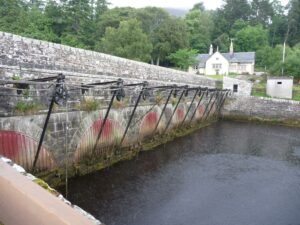
I spent two days in Inverness at the start of June participating in a meeting to start a review of archaeology across Highland Region. It was organised by ARCH, Archaeology for Communities in the Highlands, and it was a well-attended couple of days with some fascinating papers and lots of good discussion.
The people there were drawn from all walks of life and, while they included a goodly number of professional archaeologists, what really stood out for me was the role of community driven projects across the region. This is something that we see more and more, as dedicated funding for professional archaeology becomes harder to find. There are, nevertheless, other ways to undertake archaeology and, taken as a whole, Highland Region stands out as a glittering example of the work that can be achieved. The knowledge and dedication of those present at the meeting, and of the many others who work hard to research and reveal the archaeology of their area is humbling. It is all too easy to fall back on the professionals and in some cases the lack of funding or personnel becomes the excuse for research to stagnate. Not in Highland Scotland.
From the earliest Mesolithic hunter-gatherers, to industrial and vernacular architecture, and everything in between, it seemed to me that there is not a corner of Highland Archaeology that does not have its own champions working to understand and record sites and records. Of course, there are still hard decisions to be made regarding what can, and cannot, be done. And the work of professionals is still involved, sometimes in partnership: to guide; facilitate; advise and participate where possible. But it is not just the glamour of the field: there is the slog of organisation, fundraising, analysis and publication. Many different skills need to be brought to bear on any single project. There is a huge amount of work going on, often in people’s free time.
It seems invidious to single out any one project, but you can get a good idea of the range of work that exists from Tarradale Through Time, a project that spans the Mesolithic to the Highland Clearances. There is the work done on the Iron Age Broch at Clachtoll in Assynt in conjunction with AOC Archaeology, and the Ecomuseum that has been set up in Staffin, Skye. At Brahan, Ross and Cromarty, records and photographs relating to the fragile remains of a Prisoner of War Camp have been brought together. Highland Region is a large area that has sustained a substantial population over the millennia. Activities have ranged from the predictable (hunting, farming, etc), to the unpredictable (some of the earliest iron smelting took place on Loch Maree in an area now loved for its natural beauty; while at Spinningdale the massive buildings of a failed cotton milling enterprise may still be seen).
The meeting I attended was designed to kick off an assessment of the archaeological resource across the region. It is part of the ScARF project, and a useful task that will serve to assist management and research in the years to come. But I could not help feeling that the biggest resource of the area is its knowledgeable and enthusiastic population.
You must be logged in to post a comment.